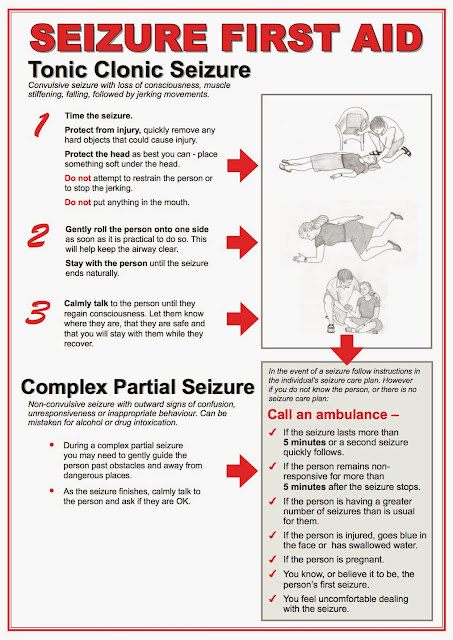Thursday, December 26, 2013
Wednesday, December 25, 2013
Thursday, November 14, 2013
Tuesday, November 12, 2013
Rotator Cuff Muscles
Remember them with the mnemonic SITS (Supraspinatus, Infraspinatus, Teres Minor, Subscapularis).
Also remember the "Empty can supraspinatus test" used to evaluate this muscle asking the patient to abduct his/her arm to 90 degrees and flex the arm from that position 30 degrees (horizontally) with thumbs pointing to the floor, then apply downward force to his/her arms. This maneuver will elicit pain and weakness on the affected side due to impingement of the supraspinatus tendon (the most commonly affected structure in Rotator cuff Sd) between the acromion and the head of the humerus.
Nerves and Muscles responsible for abduction of the arm:
• Initiates arm abduction (initial 10 degrees) → Supraspinatus muscle <Suprascapular nerve>
• Abduct arm beyond 10 degrees → Deltoid muscle <Axillary nerve>
• Raise arm above horizontal → Serratus ant & Trapezius muscles <Long thoracic & Spinal acc nerves>
Also remember the "Empty can supraspinatus test" used to evaluate this muscle asking the patient to abduct his/her arm to 90 degrees and flex the arm from that position 30 degrees (horizontally) with thumbs pointing to the floor, then apply downward force to his/her arms. This maneuver will elicit pain and weakness on the affected side due to impingement of the supraspinatus tendon (the most commonly affected structure in Rotator cuff Sd) between the acromion and the head of the humerus.
Nerves and Muscles responsible for abduction of the arm:
• Initiates arm abduction (initial 10 degrees) → Supraspinatus muscle <Suprascapular nerve>
• Abduct arm beyond 10 degrees → Deltoid muscle <Axillary nerve>
• Raise arm above horizontal → Serratus ant & Trapezius muscles <Long thoracic & Spinal acc nerves>
Saturday, November 09, 2013
Friday, November 08, 2013
Conjugate or Lateral Gaze
Saturday, November 02, 2013
The Wrong Juice
Interesting case: ECG showing wide QRS complexes
That's why we have learned not to trust automatic ECG results...
Here is the script of what happened with this patient: (Source: Movin' Meat... Thanks to ER Dr Shadowfax...)
"The tech, as per protocol, dropped the ECG on my desk within three minutes of its being completed, along with the chart. He was visibly excited. I glanced at the ECG and the triage note. In the standard terse nursing verbiage, it read "CC: Ground Level Fall. Too weak to get out of bed. No injury reported. No other complaints." There was an included prior ECG, which was normal. Today's looked like this: (see ECG above)
That's why we have learned not to trust automatic ECG results...
Here is the script of what happened with this patient: (Source: Movin' Meat... Thanks to ER Dr Shadowfax...)
"The tech, as per protocol, dropped the ECG on my desk within three minutes of its being completed, along with the chart. He was visibly excited. I glanced at the ECG and the triage note. In the standard terse nursing verbiage, it read "CC: Ground Level Fall. Too weak to get out of bed. No injury reported. No other complaints." There was an included prior ECG, which was normal. Today's looked like this: (see ECG above)
"Should
I call the cath lab?" the tech asked. We pride ourselves in having the
best door-to-dilation time in the region, and it's a key focus of our
department protocols that patients with an "Acute MI" or
heart attack need to be expedited to the cath lab. The tech had seen the
computer interpretation of "ACUTE MI" and was rarin' to go.
Thursday, October 31, 2013
Wednesday, October 30, 2013
Saturday, October 19, 2013
Tuesday, October 15, 2013
Lithium Mechanism of Action (MOA)
1.
1st
Line Tx Bipolar Disorder
Works like Na+. Blocks Na Channels
-Cell can’t become too positive
-Cell can’t become too negative
Mood Stabilizer (not acute Dz)
Blocks Relapse & acute Maniac Events
2.
Blocks ADH receptors V2
→ Nephro DI
SIADH Tx
3. Fools kidney:
Holds Li, let go Na
→Hyponatremia
Affects Electrolytes & ion transport
4. Fools Thyroid
(Resembles I)
→Hyponatremia
5. Fools PTH
receptors:
a.
↑Ca+2, ↓PO4
6.
Phospho Inositol Cascade Inhibition
Inhibits dephospholiration of IP3->IP2, IP2-IP1 and IP1-IP
(inositol recycling steps → ↓PIP2)
7.
↓DA & NE turnover (↓DA ↓ NE
↑Serotonin)
Monday, October 07, 2013
Restrictive lung Diseases
Explain all restrictive lung diseases.
Restrictive: interstitial problem (non-bacterial)
- Small stiff lungs (↓VC)
- Trouble breathing IN → FEV1/FVC >0.8
- ABG: ↓pO2 → ↑RR, ↓pCO2, ↑pH
- CXR: reticulo-nodular pattern, ground-glass appearance
- Die of cor pulmonale
- Ex: NM dz (breathing out is passive), drugs, autoimmune dz
- Tx: Pressure support on ventilator, ↑O2, ↑RR, ↑inspiratory time
Restrictive: interstitial problem (non-bacterial)
- Small stiff lungs (↓VC)
- Trouble breathing IN → FEV1/FVC >0.8
- ABG: ↓pO2 → ↑RR, ↓pCO2, ↑pH
- CXR: reticulo-nodular pattern, ground-glass appearance
- Die of cor pulmonale
- Ex: NM dz (breathing out is passive), drugs, autoimmune dz
- Tx: Pressure support on ventilator, ↑O2, ↑RR, ↑inspiratory time
Obstrucrive Lung Diseases
Obstructive: airway problem (bacterial)
• Big mucus-filled lungs (RV, Reid index = airway
thickness/airway lumen)
•Trouble breathing out → FEV1/FVC < 0.8
• ABG: ↑pC02 → ↑RR, ↓pH
• Die of bronchiectasis
Ex: COPD
Tx: Manipulate rate on ventilator ↑RR ↑expiratory time, ↑O2 only if needed.
Sunday, October 06, 2013
Saturday, October 05, 2013
Monday, July 15, 2013
Dear Tsuzhi
We will miss you dear Tzuhsi. You brought us so much love & joy to our lives.... We will love you forever! @vs2020 pic.twitter.com/tyZ0yPnkBb
— quikev (@quikev) July 16, 2013
Wednesday, February 06, 2013
Thursday, January 24, 2013
Saturday, January 19, 2013
Friday, January 18, 2013
Saturday, January 12, 2013
Bandida
@robertojrvm @errodriguezc Encontré a una bandida coqueteándole al Mitsu... twitter.com/quikev/status/…
— quikev (@quikev) January 12, 2013
Subscribe to:
Posts (Atom)






.bmp)

















